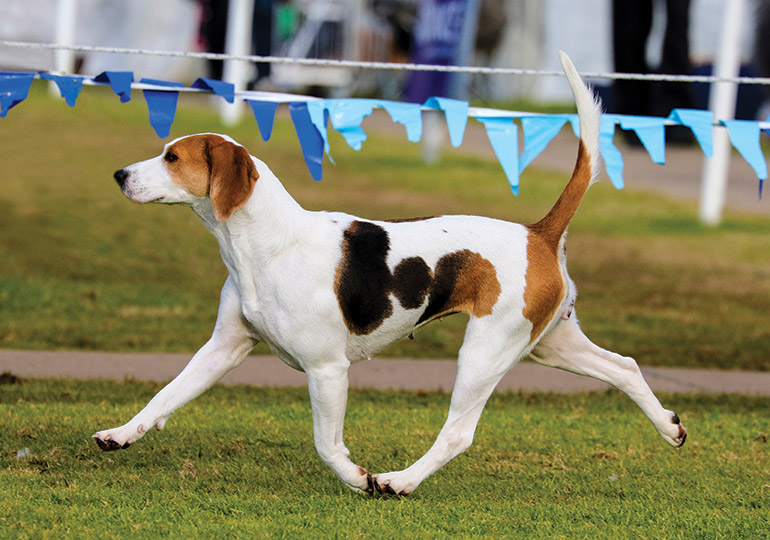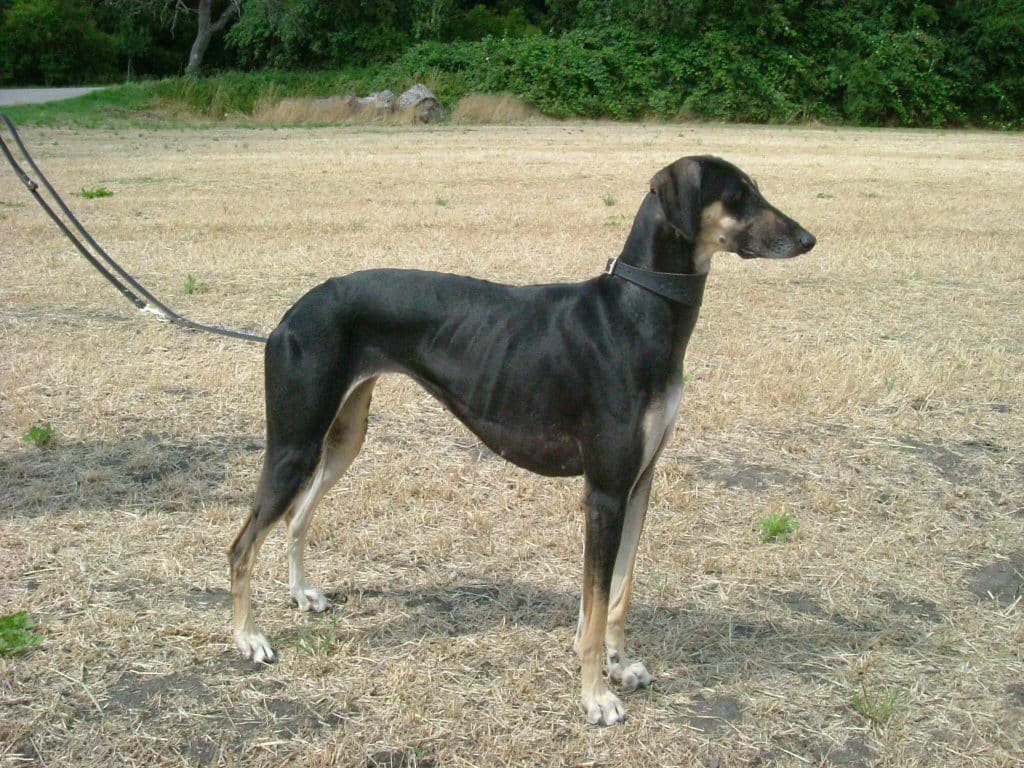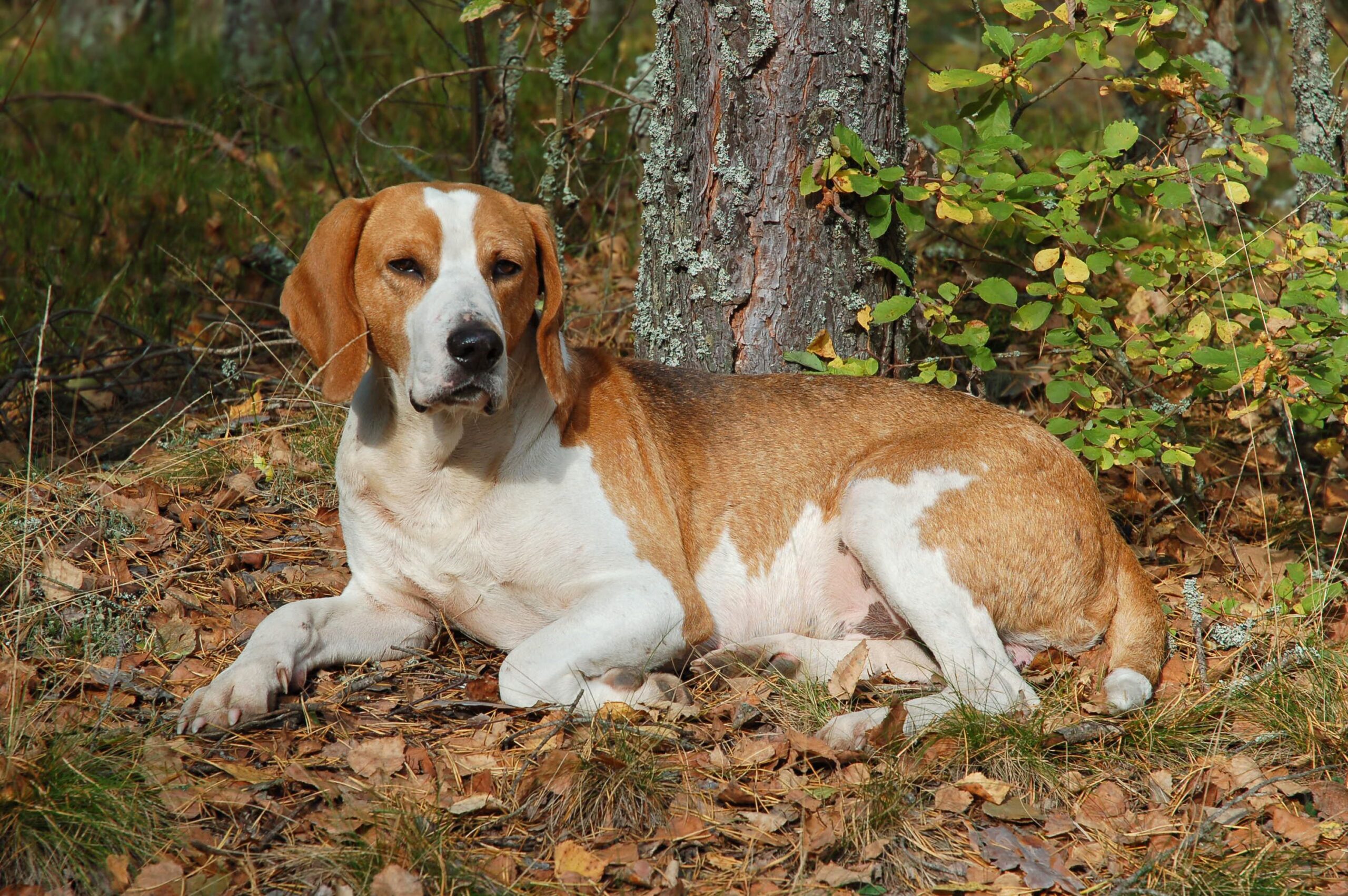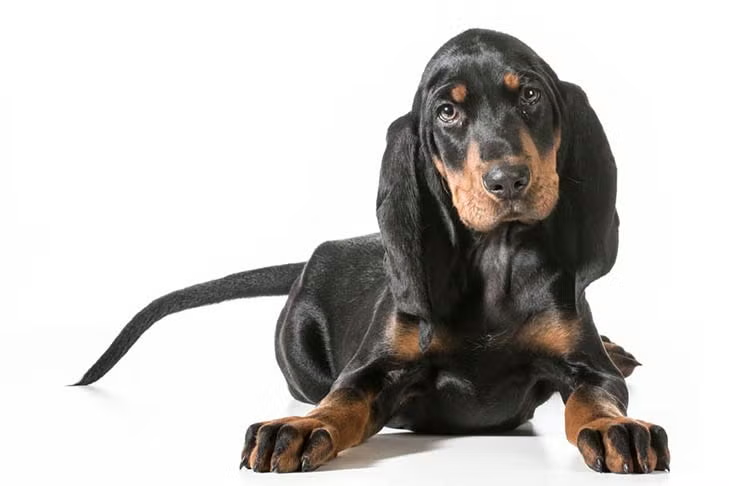My Unexpected Introduction to the Wonderful Harrier
The first time I encountered a Harrier was at a local dog show. I was wandering between the exhibition rings when I spotted what I initially thought was a Beagle on growth hormones – similar tricolor pattern but standing taller and more athletic. The owner noticed my curious stares and beckoned me over with a smile. “Everyone thinks she’s either a large Beagle or a small Foxhound,” she laughed. “This is Sadie, my Harrier.” I spent the next twenty minutes petting this friendly, energetic dog and learning about one of the dog world’s best-kept secrets. By the time I left, I was completely fascinated by this rare but remarkable breed.
If you’ve never heard of Harriers, you’re definitely not alone. Despite being one of the oldest scent hound breeds with a history stretching back centuries, they remain surprisingly uncommon as pets and are rarely seen outside of hunting circles or dog shows. Yet with their perfect medium size, friendly temperament, and impressive athletic abilities, they deserve way more recognition than they typically receive.
Whether you’re considering adding one of these versatile hounds to your family, are curious about their hunting heritage, or just love learning about uncommon dog breeds, I’ve put together the ultimate guide to Harriers. From their fascinating history to what they’re actually like as family companions (spoiler alert: they’re amazing for active families), we’ll cover everything you need to know about these athletic, good-natured hounds. So grab your favorite beverage, get comfy, and let’s dive into the wonderful world of Harriers!
Ancient Heritage: The Rich History of the Harrier
To truly understand what makes Harriers so special, we need to appreciate their deep historical roots, which may go back further than you might expect for a breed that remains relatively uncommon today.
Ancient Origins and Hunting Heritage
The Harrier’s history is somewhat debated among dog historians, but most agree that they’re an ancient breed with roots extending back many centuries. The name “Harrier” derives from the Norman French word “harier” or “harrier,” meaning a dog used to hunt hares – making their original purpose clear from their very name.
There are references to “harriers” in English texts dating back to the 13th century, though these early dogs may have differed somewhat from the modern breed. The breed as we know it today was likely developed in England, created to hunt hares and foxes in packs, offering a middle ground between the smaller Beagles used for rabbits and the larger Foxhounds.
One theory about their development suggests that Harriers were created by crossing Bloodhounds with Greyhounds and perhaps other scenthounds – combining the superior scenting ability of the former with the speed of the latter. Another theory proposes they descended from older French hunting hounds, brought to England during the Norman Conquest.
What we do know is that by the 1700s, Harrier packs were well-established throughout England and Ireland, particularly favored by country squires and farmers who needed a versatile hunting dog that could track and chase hares across varied terrain. These dogs hunted in packs, using their keen noses to track game and their melodious voices to alert hunters to their location.
Modern Development and Recognition
The first Harrier pack in England was established in 1260 by Sir Elias de Midhope in Yorkshire, and some contemporary Harrier packs can trace their lineage back hundreds of years. The Association of Masters of Harriers and Beagles was formed in England in 1891 to maintain pack records and establish standards for the breed.
Harriers were imported to America in colonial times, with the first pack established in Virginia in 1747. Despite this early introduction, they never gained the popularity in the US that they enjoyed in their native England. The American Kennel Club recognized the breed in 1885, but even today, they remain one of the rarest AKC recognized breeds.
In their homeland of England, Harriers continued to be bred primarily for hunting rather than as companions or show dogs, with an emphasis on working ability rather than standardized appearance. This focus on function over form has helped maintain their health and working capabilities, though it has also contributed to their relative obscurity in the pet world.
Today, while some Harriers still work in hunting packs, particularly in England, they’re increasingly finding homes as family companions, where their manageable size, friendly temperament, and athletic abilities make them wonderful partners for active households.
The Harrier Look: The Perfect Middle Ground
Harriers are often described as occupying the sweet spot between Beagles and English Foxhounds in terms of size and appearance. Let’s explore their physical characteristics and what makes them distinctive.
Size, Build, and Overall Appearance
Harriers are medium-sized hounds with a balanced, athletic build that speaks to their purpose as endurance hunters. Males typically stand 19-21 inches at the shoulder and weigh between 45-60 pounds, while females are slightly smaller at 18-20 inches and 40-55 pounds.
Their overall appearance conveys strength, balance, and stamina. These are working dogs built to run for hours over varied terrain, and their physical structure reflects this purpose. Key physical features include:
- A broad head with a moderately long, square muzzle
- Medium-length ears that lie flat against the cheeks, set on high but not as long as those of a Bloodhound
- Large, dark eyes with an alert, intelligent expression
- A deep chest providing ample lung capacity for endurance
- Strong, straight legs with round, tight feet built for covering many miles
- A medium-length tail carried upright when the dog is alert
Their movement is free-flowing and effortless, with a ground-covering stride that can be maintained for hours. This efficiency of movement was essential for their historical role as pack hunters who might cover many miles in a day’s hunt.
Coat Colors and Grooming
Harriers typically come in the classic hound tricolor pattern – black, tan, and white. The most common configuration is a white base with black patches and tan points around the face, ears, and legs. However, they can also be found in other color combinations such as red and white or varying shades of what’s known as “hare pie” (a mottled mixture of colors).
Their coat is short, dense, and glossy, with a hard texture that provides protection from weather and underbrush. This practical coat requires minimal grooming – weekly brushing with a soft bristle brush or hound glove helps remove loose hair and distribute skin oils. They do shed moderately year-round with seasonal increases.
Unlike some hound breeds, Harriers typically don’t have the strong “hound odor,” making them somewhat easier to maintain as house dogs. Occasional baths are usually sufficient to keep them clean and fresh-smelling.
Those medium-length ears should be checked weekly for signs of infection and cleaned as needed with a veterinarian-approved ear cleaner. Regular nail trims and dental care round out their basic grooming needs.
Personality & Temperament: The Harrier Character
Beyond their athletic build and hunting abilities, what’s it actually like to live with a Harrier? Their personalities combine classic hound traits with some distinctive characteristics that make them special companions.
The Essential Harrier Traits
If I had to sum up the Harrier personality in three words, they would be: friendly, energetic, and determined. These dogs bring together a genuinely sweet nature with impressive stamina and the classic hound persistence.
Friendliness is perhaps their most endearing trait. Harriers were bred to work in packs, which has created a dog that typically gets along well with other dogs and enjoys human company. They’re rarely aggressive and often greet strangers with wagging tails rather than suspicion. This sociable nature makes them poor guard dogs but excellent family companions, generally good with children, and adaptable to multi-pet households when properly socialized.
Energy is abundant in the Harrier. They were bred for endurance hunting that might last all day, and this stamina translates to a need for regular exercise and activity. Without proper outlets, their energy can manifest as destructive behaviors or excessive vocalization. However, when their exercise needs are met, many Harriers are surprisingly calm and content indoors.
Determination (some might call it stubbornness) is the classic hound trait that completes their character. Harriers were bred to follow a scent trail despite distractions, fatigue, or challenging conditions. This single-mindedness served them well as hunters but can present challenges in a pet setting. Once a Harrier catches an interesting scent, their recall reliability can drop dramatically as their hunting instincts take over.
The Voice: Melodious and Meaningful
We can’t talk about Harrier personality without mentioning their voice! As hunting hounds, they were bred to be vocal on the trail, allowing hunters to follow their progress by sound when they were out of sight.
Their voice is often described as musical – a distinctive baying howl that carries over long distances. Most Harriers have a range of vocalizations, from excited barks to the classic baying “aroooo” when they’re on a scent. Many owners describe them as “talkative,” with different sounds for different situations.
This vocal nature can be challenging in suburban environments and is one reason they’re not ideal for apartment living. Training can help manage excessive vocalization, but it’s important to understand that some baying is simply part of who they are – expecting a completely quiet Harrier is unrealistic.
Social Needs and Pack Orientation
Harriers were developed to work in packs, and this aspect of their heritage remains strong. They typically get along well with other dogs and often thrive in multi-dog households. Many actually do better with canine companions, especially if left alone for periods of time.
Their social nature extends to humans as well – these are not dogs that do well with isolation. They want to be part of family activities and can develop separation anxiety if regularly left alone for long periods. Despite their independent hunting style, they form strong bonds with their people and enjoy companionship.
With proper socialization, many Harriers can learn to coexist with cats, particularly if introduced as puppies. However, their prey drive may make them unsuitable for households with smaller pets like rabbits or guinea pigs.
The Amazing Nose: Understanding Their Scenting Abilities
The Harrier’s most remarkable feature isn’t their manageable size or friendly disposition – it’s their extraordinary sense of smell. Let’s explore what makes their scenting ability so special and how it impacts life with these dogs.
The Science Behind the Scent
Like all scent hounds, Harriers have a significantly more developed olfactory system than humans. While the human nose contains about 5-6 million scent receptors, a hound’s nose packs an estimated 220 million or more! Their brain’s olfactory bulb (the part that processes scent information) is also proportionally much larger than ours.
This gives them the ability to detect scents at concentrations up to 100 million times lower than what humans can perceive. They can distinguish between incredibly similar scents, follow trails that are days old, and sort through a complex landscape of overlapping odors to focus on their quarry.
Their physical features enhance this natural ability. Those medium-length ears help stir up scent particles from the ground as the dog moves. The loose skin around their muzzle can trap scent particles, and their moist, spongy noses efficiently capture scent molecules from the air.
Tracking Behavior in Action
Harriers were specifically developed for tracking hares, which are known for their evasive running patterns and speed. This created a dog with exceptional focus and determination on a scent trail, able to follow even when the trail gets complicated with twists, turns, and backtracking.
When on a scent, a Harrier will put their nose to the ground and methodically follow the exact path their quarry took. As they get closer to their target, their excitement builds, expressed through increased vocalization and a higher tail carriage.
Traditionally, Harriers hunted in packs, working together to follow the scent and communicate with each other through their distinctive voices. This cooperative hunting style created dogs that are generally good at reading other dogs’ body language and working as a team.
This remarkable scenting ability makes them excellent candidates for scent-based dog sports like tracking, field trials, and nosework. Many Harriers excel in these activities, which provide constructive outlets for their natural instincts.
For pet owners, this incredible nose means that walks will frequently turn into sniffing expeditions, and secure fencing is absolutely essential. Once they catch an interesting scent, their recall reliability can drop dramatically as their hunting instincts take over.
Health and Longevity: A Generally Hardy Breed
One advantage of purpose-bred working dogs like the Harrier is their generally good health. As a breed developed for function rather than appearance, they’ve maintained a practical body structure and avoided many of the health problems that plague some more popular breeds.
Common Health Considerations
While generally robust dogs with fewer health problems than many breeds, Harriers can be prone to certain conditions:
- Hip Dysplasia: This developmental condition affects the hip joint and can lead to arthritis and mobility issues.
- Epilepsy: Seizure disorders can occur in the breed, though they’re not especially common.
- Ear Infections: Like many hounds with dropped ears, they can be prone to ear infections if ear hygiene is neglected.
- Hypothyroidism: An underactive thyroid gland that can affect metabolism and overall health.
- Bloat (Gastric Dilatation-Volvulus): Like many deep-chested breeds, they can be susceptible to this life-threatening condition where the stomach twists.
Working with a reputable breeder who conducts health testing on their breeding stock can reduce the risk of inherited conditions. Regular veterinary check-ups are essential for catching and addressing health issues early.
Lifespan and Aging Considerations
The average lifespan of a Harrier is about 12-15 years, which is excellent for a medium-sized breed. Many remain active and energetic well into their senior years, though their exercise needs may decrease somewhat as they age.
As they get older, Harriers may develop arthritis, particularly if they’ve been very active throughout their lives. Weight management becomes even more critical for older dogs to reduce strain on their joints. Many owners find that joint supplements (given under veterinary guidance) help maintain mobility as their Harriers age.
Senior Harriers often maintain their friendly, sociable temperament while becoming somewhat less driven to follow every interesting scent, often making them more manageable as house pets in their golden years.
Training and Exercise: Meeting Their Needs
Training a Harrier requires understanding their unique mindset and providing adequate physical and mental stimulation. Let’s explore effective approaches to bringing out the best in these energetic, scent-driven dogs.
Exercise Requirements: The Key to Happiness
Perhaps the most important thing to understand about Harriers is their substantial need for exercise. These dogs were bred for endurance hunting that might last all day. Without adequate physical outlets, they can become destructive, excessively vocal, and difficult to manage.
A minimum of 1-2 hours of vigorous exercise daily is appropriate for most adult Harriers. This should include activities that allow them to run and burn energy, not just leash walking. Suitable exercises include:
- Hiking on trails
- Running in a securely fenced area
- Swimming (many Harriers enjoy water activities)
- Play sessions with other dogs
- Structured activities like tracking, field trials, or lure coursing
In addition to physical exercise, mental stimulation is equally important. Scent work is particularly satisfying for these dogs – activities like tracking, nosework, or even simple “find it” games around the house engage their natural abilities and help tire them mentally.
It’s worth noting that a securely fenced area is essential for Harriers. Once they catch an interesting scent, their hunting instincts take over, and they can run for miles completely focused on the trail. Their recall can be unreliable at best when they’re in “hunting mode,” making off-leash exercise in unfenced areas risky.
Training Approaches: Working With Their Nature
Training a Harrier requires patience, consistency, and an understanding of their hound mentality. Here are some strategies that work particularly well:
- Start early: Begin training and socialization when they’re puppies and more receptive to new experiences.
- Use positive reinforcement: Harriers respond much better to rewards than corrections. Find what motivates your individual dog – food rewards work for many, but some may respond better to play or praise.
- Keep sessions short and engaging: Harriers can become bored with repetitive training. 5-10 minute sessions several times a day are more effective than one long session.
- Be consistent but flexible: Consistency in rules and commands is important, but flexibility in training approaches may be necessary as you discover what works best for your individual dog.
- Exercise before training: A tired Harrier is more likely to focus on training than one with pent-up energy.
- Use their nose: Incorporating scent work into training can increase their engagement and motivation.
It’s important to understand that Harriers were bred to work somewhat independently, making decisions on their own while tracking. This created a dog that can problem-solve independently but doesn’t necessarily look to humans for constant direction. Many new owners mistake their independent decision-making for stubbornness or lack of intelligence, when in fact they’re simply operating according to their breeding.
Special Training Challenges
Two aspects of training deserve special attention with Harriers: recall and their vocal nature.
Reliable recall (coming when called) is perhaps the biggest training challenge with this breed. Once they catch an interesting scent, their hunting instincts can override their response to commands. For safety, most experienced Harrier owners never allow their dogs off-leash in unsecured areas, regardless of how well-trained they seem. For those determined to improve recall, long-line training and high-value rewards can help, but expectations should remain realistic.
Managing their vocal tendencies requires consistent training from an early age. While some baying is an inherent trait that shouldn’t be completely suppressed, most Harriers can learn appropriate times and places for vocalization. Teaching a reliable “quiet” command and rewarding calm behavior can help manage excessive baying, though they’ll likely never be silent dogs.
Is a Harrier Right for You? Honest Assessment
After learning all about these athletic, friendly hounds, you might be wondering if a Harrier would fit well in your lifestyle. Let’s take an honest look at who should (and perhaps shouldn’t) consider this breed.
You Might Be a Great Harrier Owner If…
A Harrier might be right for you if:
- You lead an active, outdoor lifestyle and enjoy activities like hiking, running, or cycling
- You have a securely fenced yard or reliable access to safe exercise areas
- You appreciate their vocalization or live in an area where it won’t disturb neighbors
- You have patience for training a dog with an independent streak
- You’re looking for a friendly, sociable dog that generally gets along well with people and other dogs
- You want a medium-sized dog – larger than a Beagle but not as big as a Foxhound
- You appreciate their hunting heritage and natural instincts
- You’re interested in dog sports like tracking, field trials, or agility
Harriers can adapt well to family life and generally do well with children, especially if raised with them. They often thrive in households with multiple dogs, benefiting from canine companionship.
A Different Breed Might Be Better If…
A Harrier might not be the best choice if:
- You have a sedentary lifestyle or limited time for exercise
- You live in an apartment or area with strict noise ordinances
- You want a dog that’s easy to train with high reliability off-leash
- You’re looking for a guard dog (they’re typically friendly to everyone)
- You have small pets like rabbits or guinea pigs (strong prey drive)
- You’re away from home for long periods regularly
- You want a dog that focuses primarily on you rather than environmental stimuli
- You prefer a dog that’s content with moderate exercise like daily walks
Finding Your Harrier
If you decide a Harrier is right for you, be prepared for a bit of a search. Due to their rarity, finding a Harrier puppy or adult may require patience and persistence:
The Harrier Club of America can be a good starting point for finding reputable breeders. Given their rarity, you may need to be patient and willing to travel or have a puppy shipped.
Harriers occasionally appear in rescues or shelters, though they’re often misidentified as Beagle mixes or small Foxhounds. Hound-specific rescues sometimes have Harriers or Harrier mixes available for adoption.
Because they’re rare, be especially careful to avoid puppy mills or irresponsible breeders who may claim to have Harriers but are actually selling mixed-breed puppies. A reputable breeder will welcome questions, provide health testing documentation, and show a genuine interest in where their puppies are going.
Conclusion: The Overlooked Hound That Deserves More Recognition
There’s something special about Harriers. From their perfect middle size to their friendly temperament and impressive athletic abilities, these dogs offer a wonderful combination of traits that make them excellent companions for the right active homes.
Living with a Harrier certainly comes with unique challenges – their substantial exercise requirements, vocal nature, and that independent streak that can make training interesting. But for active people who appreciate them for exactly who they are, these challenges are far outweighed by the joy of sharing life with such a good-natured, capable, and affectionate companion.
Whether they’re bounding tirelessly alongside you on a trail or baying melodiously at an interesting scent, Harriers bring a special energy to the lives of those lucky enough to know them. They connect us to centuries of hunting tradition while forming deep bonds with their modern families.
If you decide to welcome one of these rare treasures into your home, prepare for an adventure filled with energy, enthusiasm, and the rewards of partnering with a dog whose talents and temperament have been refined over centuries of working alongside humans. It’s a unique journey – and for the right person, an incredibly rewarding one.




